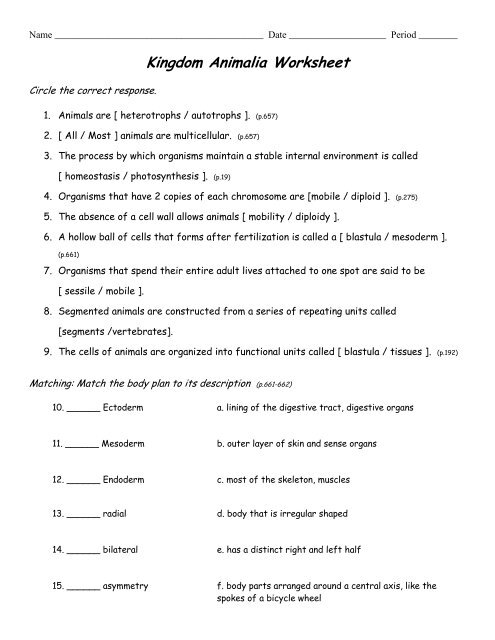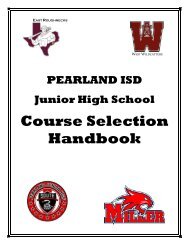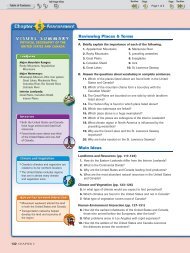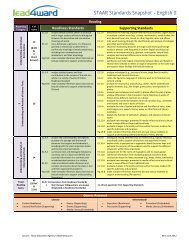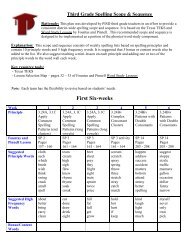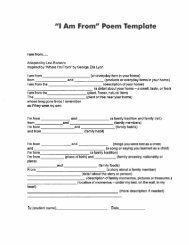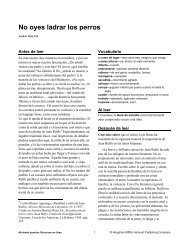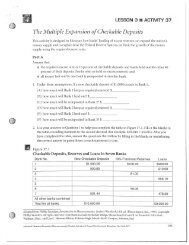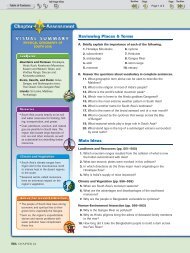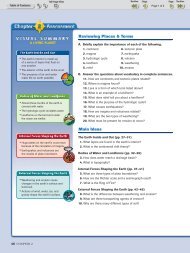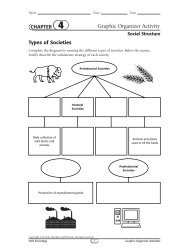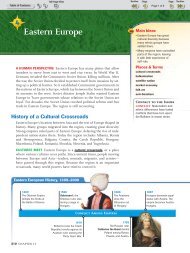Kingdom Animalia Worksheet
Kingdom Animalia Worksheet
Kingdom Animalia Worksheet
Create successful ePaper yourself
Turn your PDF publications into a flip-book with our unique Google optimized e-Paper software.
Name ___________________________________________ Date ____________________ Period ________<br />
Circle the correct response.<br />
<strong>Kingdom</strong> <strong>Animalia</strong> <strong>Worksheet</strong><br />
1. Animals are [ heterotrophs / autotrophs ]. (p.657)<br />
2. [ All / Most ] animals are multicellular. (p.657)<br />
3. The process by which organisms maintain a stable internal environment is called<br />
[ homeostasis / photosynthesis ]. (p.19)<br />
4. Organisms that have 2 copies of each chromosome are [mobile / diploid ]. (p.275)<br />
5. The absence of a cell wall allows animals [ mobility / diploidy ].<br />
6. A hollow ball of cells that forms after fertilization is called a [ blastula / mesoderm ].<br />
(p.661)<br />
7. Organisms that spend their entire adult lives attached to one spot are said to be<br />
[ sessile / mobile ].<br />
8. Segmented animals are constructed from a series of repeating units called<br />
[segments /vertebrates].<br />
9. The cells of animals are organized into functional units called [ blastula / tissues ]. (p.192)<br />
Matching: Match the body plan to its description (p.661-662)<br />
10. ______ Ectoderm a. lining of the digestive tract, digestive organs<br />
11. ______ Mesoderm b. outer layer of skin and sense organs<br />
12. ______ Endoderm c. most of the skeleton, muscles<br />
13. ______ radial d. body that is irregular shaped<br />
14. ______ bilateral e. has a distinct right and left half<br />
15. ______ asymmetry f. body parts arranged around a central axis, like the<br />
spokes of a bicycle wheel
What symmetry do these animals have? (p.662)<br />
16. _______________ 17. _________________<br />
Match the name of the Phylum to the organism: (p.664-734)<br />
a. vertebrates<br />
b. segmented worms<br />
c. flatworms<br />
d. jellyfish<br />
e. sea stars<br />
f. sponges<br />
g. clams<br />
h. roundworms<br />
i. insects<br />
19. _____ Cnidaria<br />
20. ______ Mollusca<br />
21. _____ Annelida<br />
22. _____ Chordata<br />
23. ______Nematoda<br />
24. ______Platyhelminthes<br />
25. ______ Porifera<br />
26. ______Arthopoda<br />
27. ______Echinodermata<br />
Animal Body Systems<br />
For each term below, indicate what body system it relates to.<br />
Note: A list of Body Systems is on p. 892-893 for your reference.<br />
28. Gastrovascular Cavity ___________________________<br />
29. Ganglia ____________________________<br />
30. Hermaphrodite ____________________________<br />
31. Gizzard ____________________________<br />
32. Blood vessels ____________________________<br />
33. Gills ____________________________<br />
34. Nerve Net ____________________________
35. Gametes ____________________________<br />
36. Radula ____________________________<br />
37. Trachea ___________________________<br />
Invertebrate Body Parts<br />
38. Insect bodies are divided into what 3 parts ? (p.727)<br />
a. ___________________<br />
b. ___________________<br />
c. ___________________<br />
39. Annelids (earthworms) are worms with ____________________ bodies. (p.694)<br />
Vertebrate Categories<br />
Macthing : Match the type of vertebrate with the characteristics. (p.771-821)<br />
40. ______ Amphibians<br />
41. ______ Mammals<br />
42. ______ Fishes<br />
43. ______ Birds<br />
44. ______ Reptiles<br />
a. Have outer covering of feathers<br />
and 2 legs for walking or perching<br />
b. Aquatic vertebrates that have<br />
paired fins, scales, & gills<br />
c. Vertebrates that have dry, scaly<br />
skin, lungs, and terrestrial eggs<br />
d. Have hair & nourish their young<br />
with milk<br />
e. Lives in water & on land; has moist<br />
skin that contains mucus glands<br />
Vertebrate Behavior : Define the terms below. (p.878)<br />
45. Migration –<br />
46. Circadian Rhythms –


